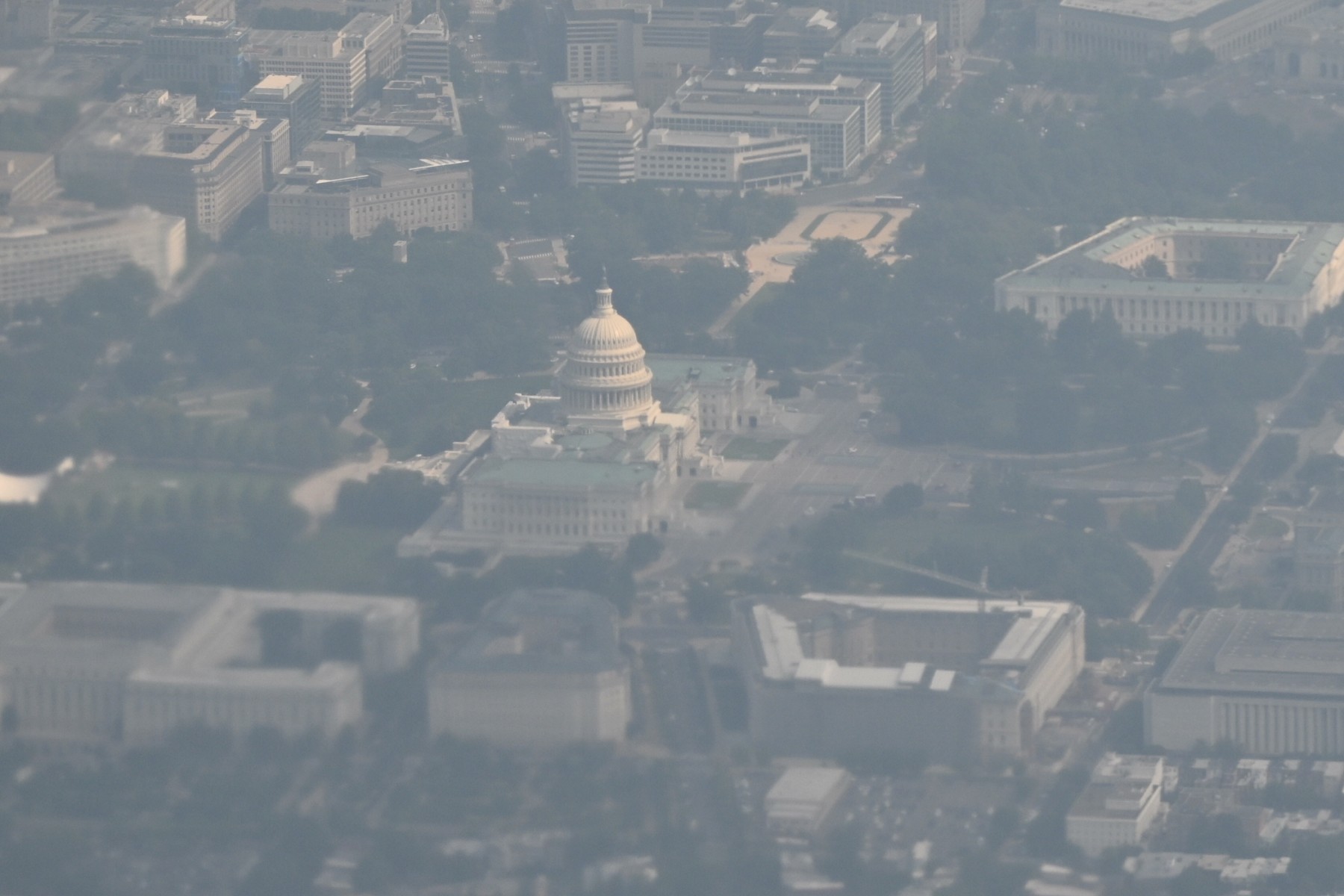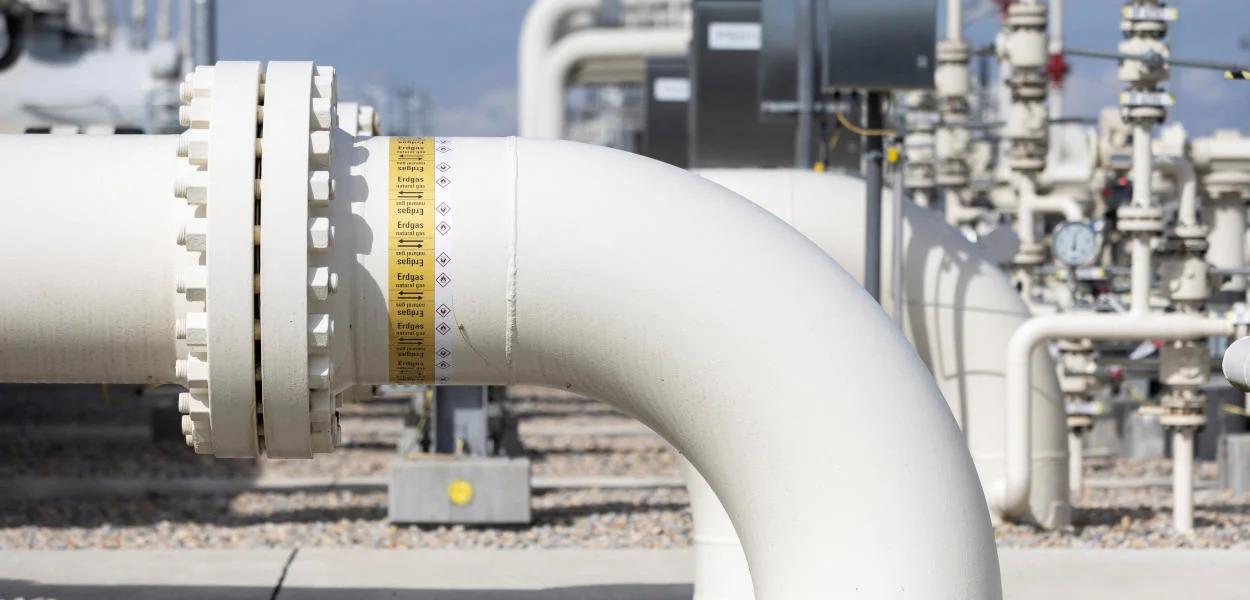Smoke from Canada’s wildfires on Wednesday brought poor air quality back to Ontario and a dozen states in the United States, with smog monitors warning of very unhealthy or emergency conditions facing million people, mostly in Detroit and Chicago.
A runner runs along the shore of Lake Michigan with thick smoke from the Canadian wildfires in the background in Chicago, Illinois, USA. Chicago Mayor Brandon Johnson said in a statement that “the city is carefully monitoring and taking precautions as the U.S. Environmental Protection Agency has classified our air quality index as ‘unhealthy’ due to smoke from Canadian wildfires in the area.” | KAMIL KRZACZYNSKI/AFP/METSUL METEOROLOGY
Alerts have been issued in Ontario, northern Minnesota, Michigan, New York and even southeastern states like North Carolina and Georgia. Hazardous weather conditions were observed across much of the Great Lakes and Mid-Atlantic regions of North America.
The quality alerts follow a brutal heat wave affecting millions, with the National Weather Service releasing a heat index forecast of up to 46°C in north and central Texas.
Chicago, whose metro area is home to more than nine million people, had a “very unhealthy” air quality index of 215 early Wednesday, the US Environmental Protection Agency said on its AirNow app.
US President Joe Biden’s official Air Force One plane landed in Chicago on Wednesday “through a thick blanket of smoke and fog”, according to a report from the White House ahead of an economic speech in the city.
While the Detroit area, with 4.3 million people, recorded the worst air quality in the country, with an AQI touching 306 or “hazardous”. An AQI of 301 or higher reflects “emergency conditions” that could affect everyone, according to the EPA.
“Chicago air quality is still very unhealthy today. Limit time spent outdoors,” the Chicago Emergency Management Office posted on Twitter.
The Canadian city of Windsor, Ontario posted an AQI of 238, according to IQAir, while Toronto – the country’s largest city – was ranked sixth for air quality in a major global city with an AQI of 238. AQI of 124.
Detroit and Chicago were among the world’s worst cities for air quality for the past few hours, according to Swiss monitoring firm IQAir, and are expected to remain in the bottom three, just behind Dubai and above Minneapolis, Minnesota. .

People walk through smoky downtown Chicago. The Chicago area is on an air quality alert as smoke from Canada’s wildfires filled the air in the city for the second day in a row. | SCOTT OLSON/GETTY IMAGES NORTH AMERICA/AFP/METSUL METEOROLOGY

The Chicago skyline is seen from the John Hancock Building’s 360 Chicago Observation Deck as thick smoke from the Canadian wildfires blankets the city. The City of Chicago has recommended that children, teenagers, the elderly, people with heart or lung conditions, and pregnant women avoid strenuous activities and limit time spent outdoors. | KAMIL KRZACZYNSKI/AFP/METSUL METEOROLOGY
Wildfires ravage parts of Canada for two months, generating smoke with small, dangerous particles that are particularly harmful to people sensitive to pollution.
“Smoke from wildfires in Canada will reduce air quality in parts of the upper/middle Mississippi Valley, Great Lakes, western Ohio Valley, central Appalachia and central Atlantic, resulting in air quality warnings for the region,” the National Weather Service said in a statement.
In New York City, where noxious haze from smoke disrupted flights three weeks ago and forced the cancellation of outdoor events, officials warned Wednesday that “air quality is expected to deteriorate this week due to the forest fires in Canada”.
The New York Metropolitan Transit Authority said it would offer free KN95 masks at its subway and train stops. The state of Pennsylvania has also declared a “Code Red” on air quality for this Wednesday.

A Marine One helicopter carrying US President Joe Biden flies over a foggy, smoke-filled Chicago on Wednesday. About 80 million people from the Midwest to the East Coast are on air quality advisories due to smog from Canada. | ANDREW CABALLERO-REYNOLDS/AFP/METSUL METEOROLOGIA

In an aerial photo taken from the Air Force One presidential plane, the United States Capitol appears shrouded in smoke from Canada’s wildfires in Washington, DC | ANDREW CABALLERO-REYNOLDS/AFP/METSUL METEOROLOGIA
Smoke from the blaze spread across the Atlantic Ocean and across European countries, including Portugal and Spain, but air quality there remained good in most cities on Tuesday, “as the most of the smoke that reached Europe was lower in the atmosphere, where it is least likely to affect human health,” according to NASA’s Earth Observatory.
Smoke from the wildfire appeared to be reaching the US capital of Washington again, a situation that NASA scientist Ryan Stauffer, who studies air pollution and ozone, described as “absolutely brutal”. . –Scientists say human-induced climate change is contributing to increased rates of wildfires, heat waves and intense weather systems.

“Prone to fits of apathy. Beer evangelist. Incurable coffeeaholic. Internet expert.”






